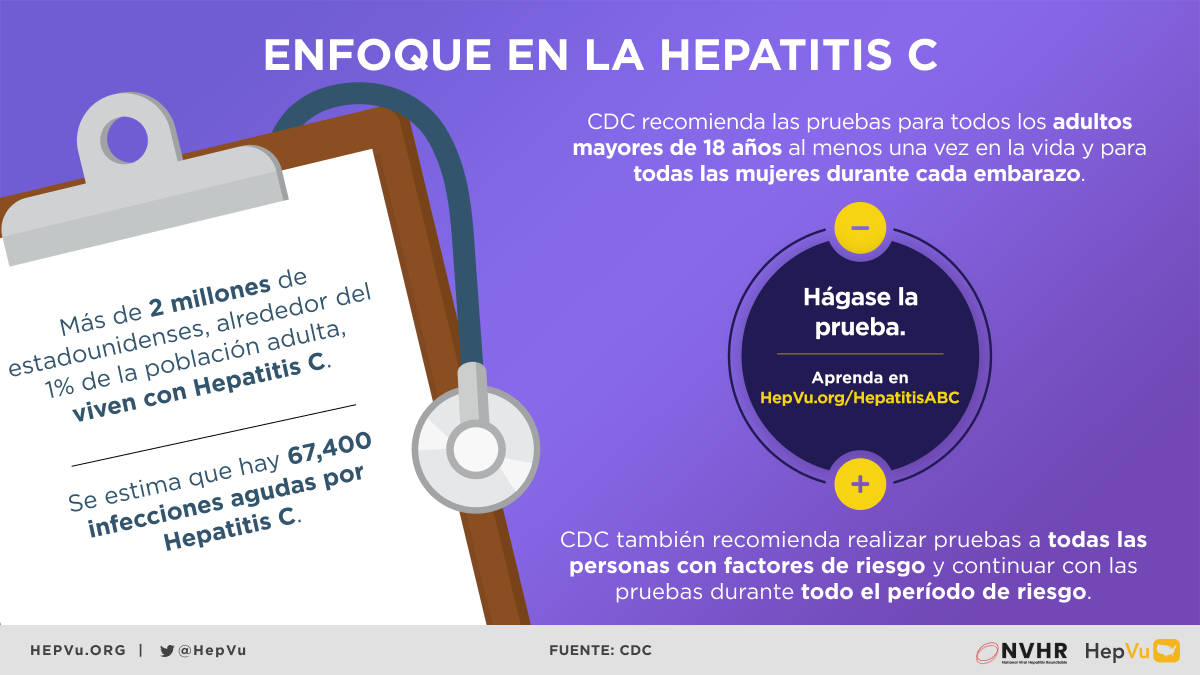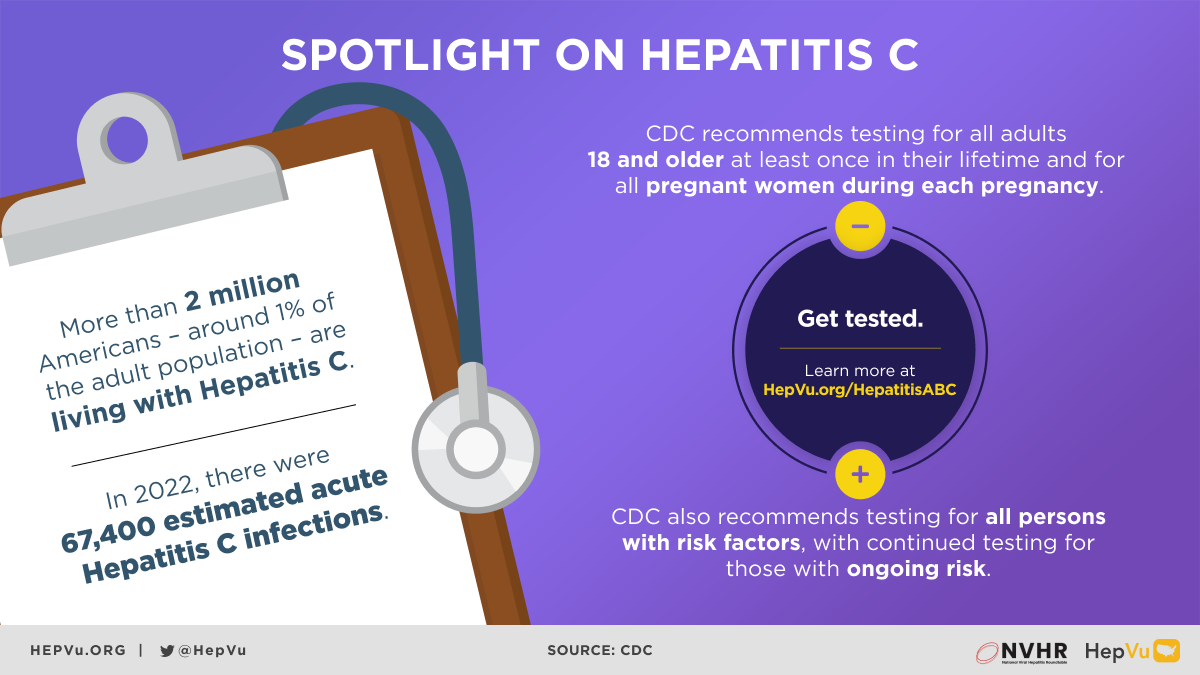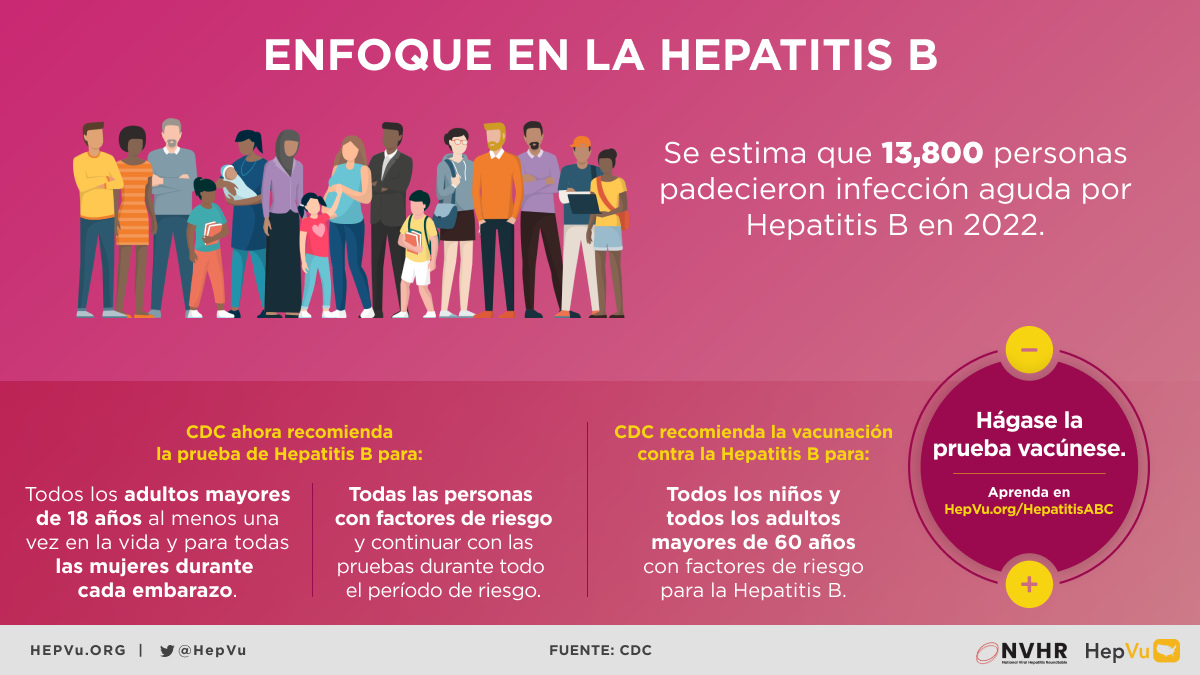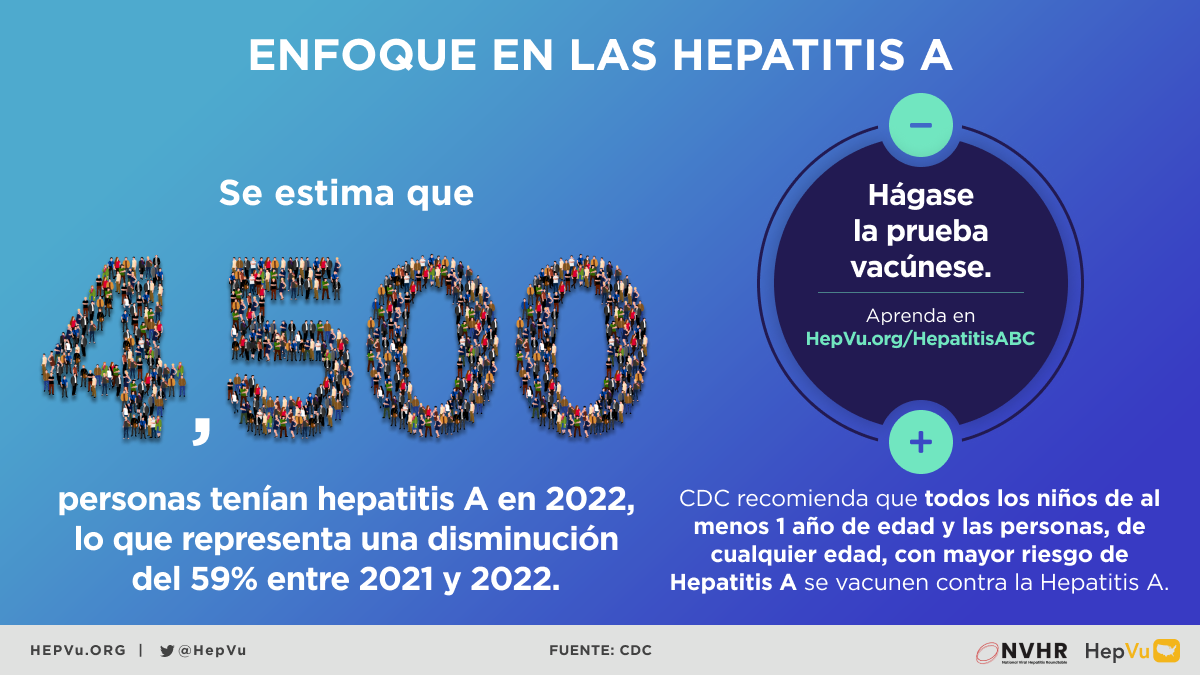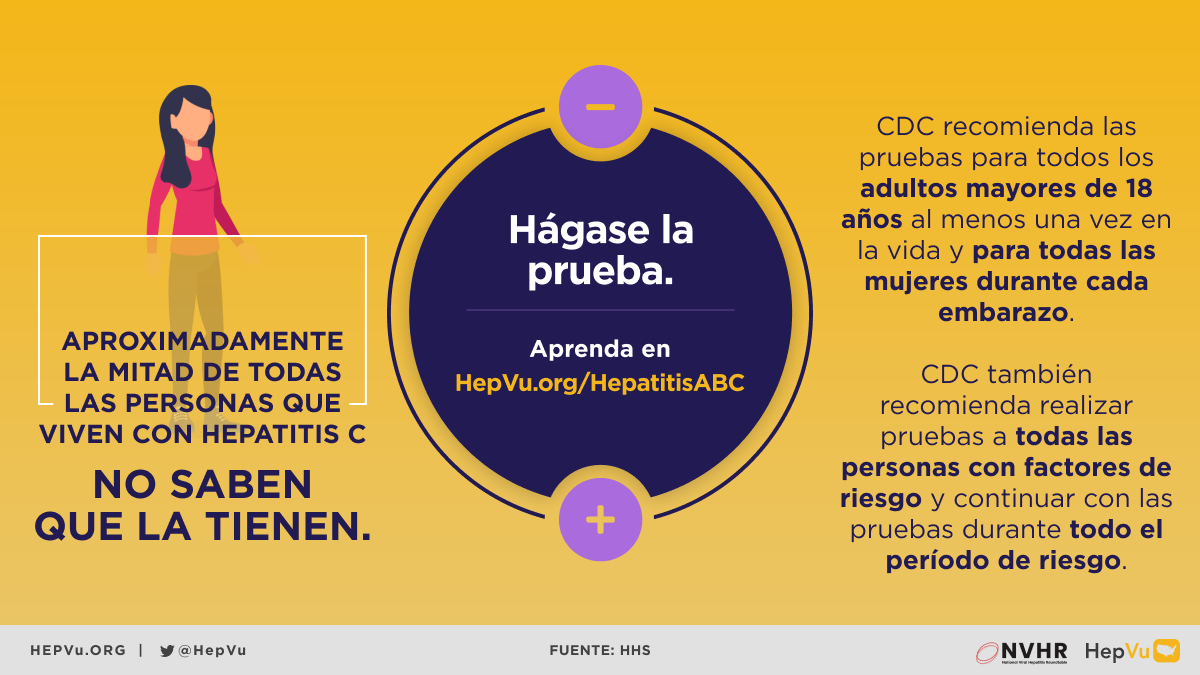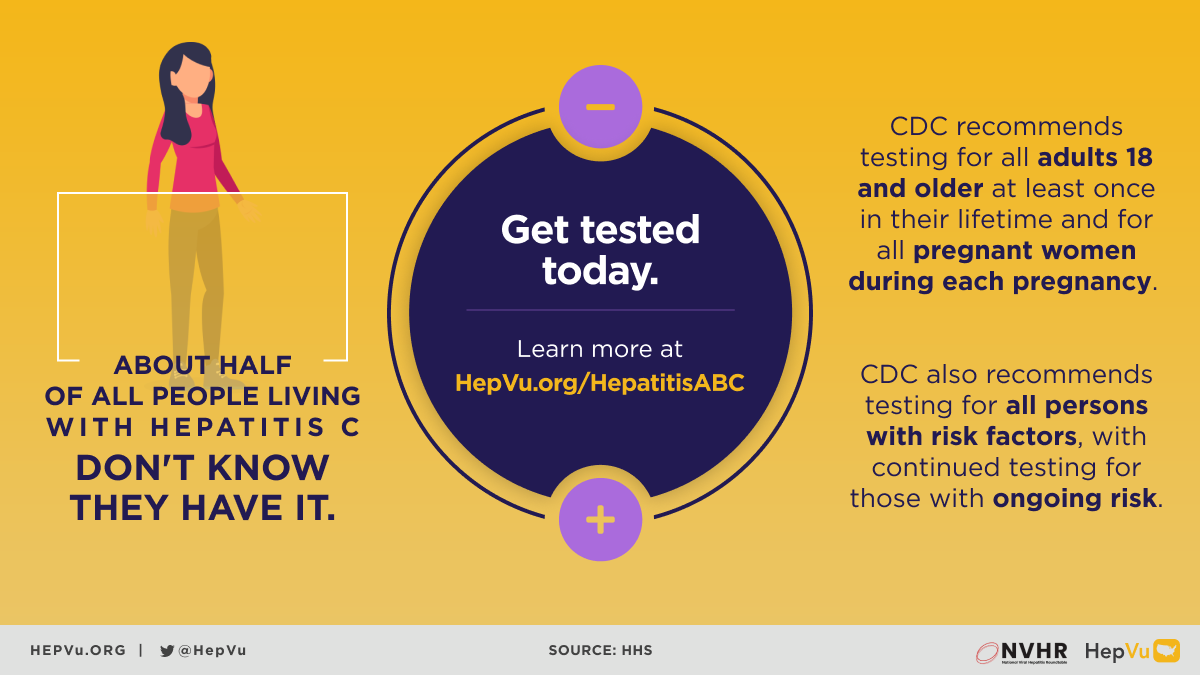
Viral hepatitis has a disproportionate impact in Hispanic/Latinx/Latine communities. While overall deaths from Hepatitis C have decreased in recent years, Hispanic/Latinx/Latine individuals are still more likely to die from Hepatitis C compared to White individuals. Hispanic/Latinx/Latine communities face multiple barriers to viral hepatitis prevention, treatment care, and research, such as language, access to available quality care and insurance, patient education, history of incarceration or injection drug use, and high-risk behavior.
Hispanic/Latinx/Latine individuals had the third highest Hepatitis C death rate among all racial/ethnic groups in 2022. Direct-acting antivirals (DAAs) can treat Hepatitis C infections. However, Hispanic/Latinx/Latine people face disparities in DAA access.
Additionally, compared to non-Hispanic children, Hispanic children with Hepatitis C infections had 72% lower odds of receiving DAAs for Hepatitis C treatment between 2014 and 2022. One study found that in Arizona Hispanic/Latinx/Latine patients were less likely to be treated for Hepatitis C compared to White patients from 2008-2018.
Though chronic Hepatitis B prevalence is highest in foreign-born Asian and African individuals in the United States, Hispanic/Latinx/Latine individuals comprise the largest proportion of the immigrant population overall. This may indicate that awareness of Hepatitis B and its risk factors may be lower among foreign-born Hispanic persons. Lower awareness of Hepatitis B and its risk factors could also contribute to low rates of follow-up testing and linkage to specialty care in Hispanic/Latinx/Latine communities.
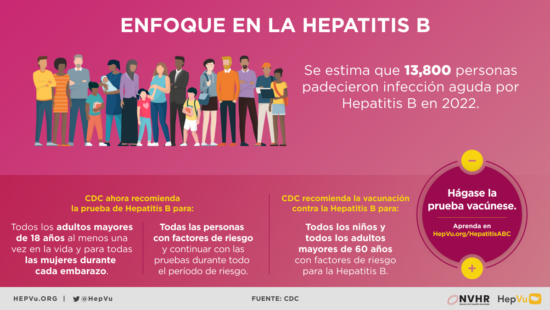
Viral Hepatitis and Health Disparities among Hispanic/Latinx/Latine People
Viral hepatitis-related health disparities are prevalent among Hispanic/Latinx/Latine communities. The disproportionate impacts in Hispanic/Latinx/Latine communities are, in part, due to social determinants of health (SDOH) that can drastically impact health outcomes.
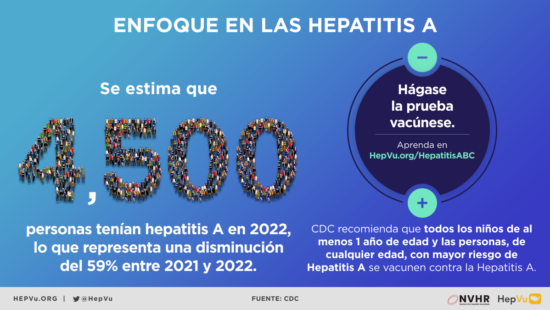
For example:
- In 2022, 44% of Hispanic adults polled by Pew Research Center claimed that communication problems from language and cultural differences caused generally worse health outcomes among Hispanic communities.
- In 2022, 48% of Hispanic adults polled by Pew Research Center said that they have less access to quality medical care where they live, leading to worse health outcomes among Hispanic/Latinx/Latine communities.
- According to Pew Research Center, 68% of Hispanic adults have a primary care provider.
- 71.8% of Hispanic individuals have a high school diploma or higher, compared to 94.6% non-Hispanic white individuals.
- Hispanic individuals have the highest uninsured rates of any racial/ethnic group in the United States. In 2020, only 49.9% of Hispanic people had private insurance, compared to 73.9% of non-Hispanic whites.
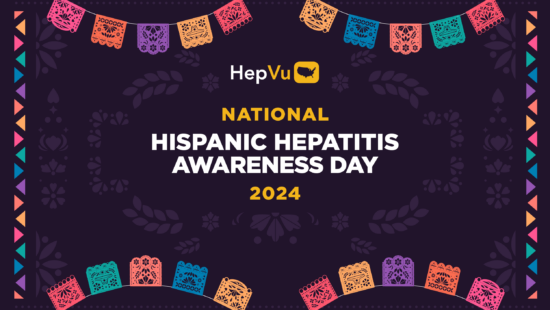
National Hispanic Hepatitis Awareness Day:
National Hispanic Hepatitis Awareness Day (NHHAD) is on May 15. The awareness day was established by the Latino Commission on AIDS (LCOA) and the Hispanic Federation in 2012, in an effort to inform Hispanic/Latinx/Latine communities about viral hepatitis testing, vaccination, and treatment.
NHHAD mobilizes government and community viral hepatitis actors to call for improvements in Hispanic/Latinx/Latine health disparities and practices surrounding viral hepatitis. It aims to unite Hispanic/Latinx/Latine communities and provide viral hepatitis awareness and education – particularly around viral hepatitis screening, prevention, treatment and care.
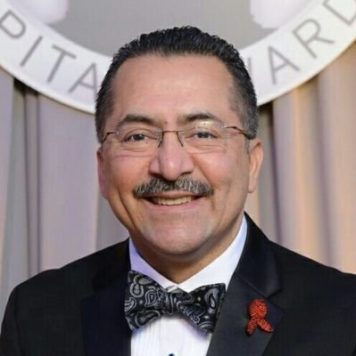
May 14, 2019
Vu Q&A: Guillermo Chacón on Hepatitis among Hispanics/Latinx
Guillermo Chacón is President at The Latino Commission on AIDS (Commission) Q: You have helped expand the Commission and its capabilities to improve the health equity of Hispanic/Latinx people. Which programs have made the biggest impact? I’d like to highlight four programs that have had a big impact: The Latino Religious Leadership Program, launched in
Read More
May 27, 2020
HepVu and LCOA Joint Webinar: The Impact of Hep C in the USA
To view the recording of HepVu and LCOA’s joint webinar on The Impact of Hep C in the USA on May 26, 2020, please see the video below. To download the presentation, please click here.
Read More
